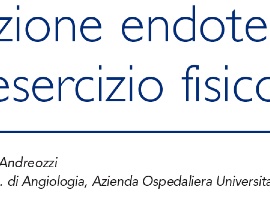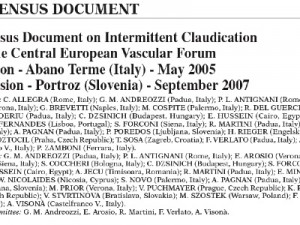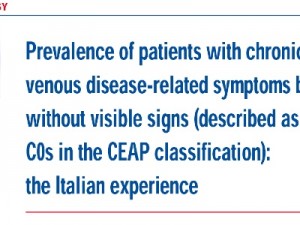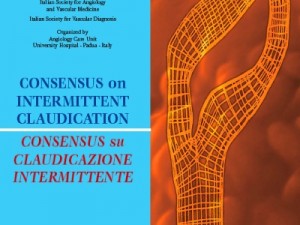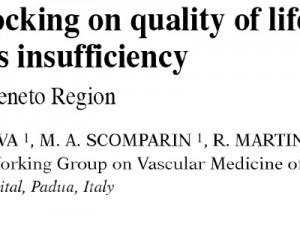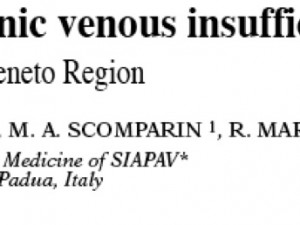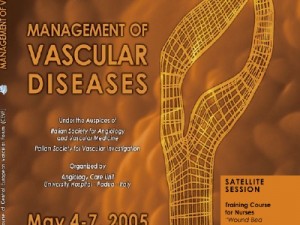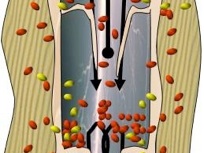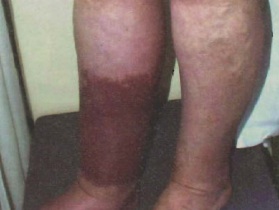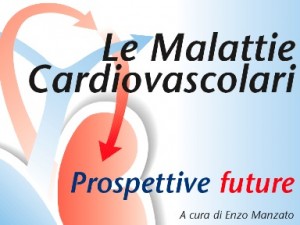Permalink link a questo articolo: http://www.andreozzi.eu/andreozziangiologia/2009/09/funzione-endoteliale-ed-esercizio-fisico/
Apr 02
Consensus Document on the Management of the Intermittent Claudication (2008 revision)
Consensus Document on the Management of the Intermittent Claudication (2008 revision)
Mercoledì 2 Aprile 2008
SCARICA DOCUMENTO
The document, published in the 2006, has been presented and shared with the Italian Society for Angiology and Vascular Medicine, Czech Society of Angiology, Slovak Society of Angiology, Romanian Society for Vascular Surgery, who also edited the translation in Italian, Czech, Slovak and Romanian languages. In January 2007 the first revision draft has been done following the suggestion of all Colleagues who had replied to the invitation. In February and April 2007, in Prague and Cyprus, a proposal for a shared protocol of physical training has been presented. In May and June 2007, all the members of the second Faculty received the new revision-draft. In July 2007 the writing committee edited the pre-final version, which was presented and approved on September 2007 in Portoroz (Slovenia) during a plenary session of the 3rd International Educational Course of CEVF.
After collecting all the suggestions given during the plenary presentation the final version has been edited by the writing committee in December 2007. In January 2008 the document has been presented and shared with the North Africa and Middle East Chapter of International Union of Angiology and the Mediterranean League of Angiology and Vascular Surgery.
In April 2008 the journal International Angiology has published the revision.
Il documento pubblicato nel 2006, è stato presentato e condiviso con la Società Italiana di Angiologia e Patologia Vascolare, società ceca di Angiologia, Società Slovacca di Angiologia, Società Rumena di Chirurgia Vascolare, che hanno realizzato la traduzione in italiano, ceco, slovacco e rumeno. Nel gennaio 2007 il progetto prima revisione è stata effettuata seguendo il suggerimento di tutti Colleghi che avevano risposto all’invito. In febbraio e Aprile 2007, a Praga e Cipro, è stata presentata una proposta di protocollo condiviso per il training fisico nei pazienti claudicanti. In Maggio e Giugno 2007 tutti i membri della Faculty del Central European Vascular Forum hanno ricevuto la nuova revisione. Nel Luglio 2007 il comitato di scrittura ha redatto la versione pre-finale, che è stata presentata ed approvata in Settembre 2007 a Portorosa (Slovenia) nel corso di una sessione plenaria del 3 ° Corso Internazionale di Formazione del CEVF.
Dopo aver raccolto tutti i suggerimenti forniti durante la presentazione in sessione plenaria, la versione finale è stata curata dal comitato di scrittura nel Dicembre 2007. Nel gennaio 2008 il documento è stato presentato e condiviso con i Capitoli Nord Africa e Medio Oriente della Unione Internazionale di Angiologia e con la Lega Mediterraneo di Angiologia e Chirurgia Vascolare.
Permalink link a questo articolo: http://www.andreozzi.eu/andreozziangiologia/2008/04/consensus-document-on-the-management-of-the-intermittent-claudication-2008-revision/
Gen 16
The C0s item of the CEAP classification
The C0s item of the CEAP classification
Lunedì 16 Gennaio 2006
SCARICA DOCUMENTO
The C0s item of the CEAP classification is one of the emerging topics in venous disease epidemiology.
It has been referred to by several studies, but until today it has not been clearly assessed by any specific study. In Italy, the topic has interested several groups of researchers since the 1980s. The author carried out several pilot studies with infrared photoplethysmography (PPG), strain-gauge plethysmography, laser-Doppler and echo-duplex.
The results suggested that one of the pathophysiological causes of venous disease-related subjective symptoms without varicose veins could be caused by the reduction of the venous wall tone, and the term hypotonic phlebopathy (HP) to describe these patients with chronic venous-disease related symptoms without varicose veins has been proposed. The diagnosis criteria are focused on symptoms (heavy legs in upright position, restless leg syndrome, subedema
and/or evening edema) and signs detected by photoplethysmography (PPG), strain-gauge plethysmography and duplex scanning (reduction of the muscle-venous calf pump and increase of the venous wall compliance).
Permalink link a questo articolo: http://www.andreozzi.eu/andreozziangiologia/2006/01/the-c0s-item-of-the-ceap-classification/
Gen 12
Consensus Document on the Management of the Intermittent Claudication (English – Italiano)
Consensus Document on the Management of the Intermittent Claudication (English – Italiano)
Giovedì 12 Gennaio 2006
SCARICA DOCUMENTO
Intermittent claudication (IC) is the major symptom of peripheral arterial disease (PAD) and is also an important marker of systemic atherosclerotic disease. PAD affects about 12% of the adult population and 20% of individuals over 70 years of age. It is associated with increased cardiovascular morbidity and mortality[2-6], with a risk for death that is 6 times higher compared to the general population.
This document presents guidelines for general practitioners (GP) for more precise and appropriate management of PAD, with particular reference to IC. It suggests the investigations that should be requested by GP and the recommendations the GP should expect from the specialist (angiologist, vascular surgeon).
La claudicazione intermittents La claudicazione intermittente (CI) è il sintomo principale dell’arteriopatia obliterante periferica (AOP) nonché un marker importante di malattia aterosclerotica sistemica. L’AOP colpisce il 12% della popolazione adulta e il 20% di quella con più di 70 anni ed è associata a elevata morbilità e mortalità cardio e cerebrovascolari, con un rischio di morte 6 volte superiore rispetto a quello della popolazione senza AOP.
Questo documento si propone al medico di medicina generale (MMG) come guida per un preciso e appropriato management dell’AOP in generale e della CI in particolare. Esso suggerisce le indagini appropriate che devono essere eseguite o richieste dal MMG, e le procedure generali di intervento che egli deve attendersi da parte dello specialista angiologo e/o chirurgo vascolare.
Permalink link a questo articolo: http://www.andreozzi.eu/andreozziangiologia/2006/01/consensus-document-on-the-management-of-the-intermittent-claudication-english-italiano/
Ott 31
Effects of elastic stocking on Quality of Life of Patients with Chronica Venous Insufficiency
Effects of elastic stocking on Quality of Life of Patients with Chronica Venous Insufficiency
Lunedì 31 Ottobre 2005
SCARICA DOCUMENTO
Aim. Even though compression therapy is the most recommended treatment for chronic venous insufficiency (CVI) in the national and international guidelines, its application, at least in Italy, is lower than the estimated need from the prevalence of CVI in the epidemiological studies. Since we believe that the measurement of the impact of compression therapy on quality of life (QoL) could improve the compliance for this precious treatment, we carried out this study on 50 patients with CVI.
Methods. Fifty patients (23 CEAP C2 and 27 C3-4-5, selected within a larger study on QoL in CVI), received a prescription for compression therapy. Before treatment and 4 months
afterwards, the patients received the instrument for QoL assessment (MOS SF-36; CIVIQ-2; Euro-QoL 5D and a visual analogue scale). The score scales have been adjusted to
poorest QoL as 0 and best QoL as 100.
Results. Baseline QoL of patients in class C2 did not show significant difference with the healthy Italian Population, except for the physical role item. The patients in class C3-4-5 showed significant reduction of QoL. After 4 months all the items of the utilized instrument showed significant improvement (from P<0.01 to P<0.04 for SF-36; from P<0.099 to P<0.006 for other instruments) in all CEAP classes.
Conclusion. The study unquestionably shows that the compression therapy improves the QoL of patients with CVI, and should be included in the CVI treatment covered by the Public National Health Insurance. Finally, the QoL measurement could be utilized as the scientific method to assess the effectiveness and efficacy of different therapeutic devices.
[Int Angiol 2005;24:325-9]
Key words: Bandages – Compression therapy
Permalink link a questo articolo: http://www.andreozzi.eu/andreozziangiologia/2005/10/effects-of-elastic-stocking-on-quality-of-life-of-patients-with-chronica-venous-insufficiency/
Set 30
Quality of Life in Chronic Venous Insufficiency
Quality of Life in Chronic Venous Insufficiency
Venerdì 30 Settembre 2005
SCARICA DOCUMENTO
Aim. Chronic venous insufficiency (CVI) is a chronic disease, whose disability has not been appreciated clearly, and several treatment costs are not covered by Public Health Service, probably because its any social impact is not well known. The aim of the study was to assess the
impact of CVI on quality of life (QoL), and to compare the sensitivity of more diffused instruments for QoL assessment.
Methods. One hundred and four patients with CVI received the Italian version of four QoL assessment instruments (MOS SF-36; CIVIQ-2; Euro-QoL 5D and a visual analogical scale). The poorest QoL was adjusted as 0, the best as 100. After filling the questionnaires, patients underwent a clinical and instrumental examination to assess the diagnosis according to the CEAP classification.
Results. The QoL is progressively impaired from CEAP class C1 to class C5-6. The SF-36 showed a normal QoL in patients of CEAP class C1 and C2. Class C3 showed a significant (P<0.0018) reduction of QoL (physical role and bodily pain), and the decline was more significant (P<0.0001) in class C4, involving all physical items and several mental ones. Class C5-6 showed very low scores of physical and social functioning, general health and vitality. Physical and emotional
scores were better than C4 patients.
Conclusion. QoL is progressively impaired in CVI, involving primarily the physical items and the emotional role, with worsening of mental items only in advanced stages. This early involvement of physical items underlines how CVI is not an esthetic problem, but, a disease. Its impact
on the lifestyle and QoL is similar to that of other chronic diseases (diabetes, cancer, chronic pulmonary disease), reaching in the class C5-6 the poorest level, similar to heart failure.
[Int Angiol 2005;24:272-7]
Key words: Venous insufficiency – Quality
Permalink link a questo articolo: http://www.andreozzi.eu/andreozziangiologia/2005/09/quality-of-life-in-chronic-venous-insufficiency/
Mag 04
Management of Vascular Diseases
Management of Vascular Diseases
Mercoledi 4 Maggio 2005
SCARICA DOCUMENTO
Programme and Abstracts of the 2nd Educational Course of Central European Vascular Forum. Abano Terme 4-7 May 2005
Permalink link a questo articolo: http://www.andreozzi.eu/andreozziangiologia/2005/05/management-of-vascular-diseases/
Apr 30
Insufficienza Venosa Cronica: dalla macro alla microcircolazione
Insufficienza Venosa Cronica:
dalla macro alla microcircolazione
Venerdì 30 Aprile 2004
SCARICA DOCUMENTO
L’insufficienza venosa cronica (IVC) è un quadro clinico caratterizzato da sintomi e segni legati
all’ipertensione venosa, dipendente da alterazioni strutturali o funzionali delle vene. Le cause più frequenti sono un’alterazione primitiva della parete e delle valvole delle vene soprafasciali degli arti inferiori, con dilatazione e reflusso (varici) o alterazioni secondarie dovute a precedenti trombosi venose profonde (TVP) con ostruzione persistente, ricanalizzazione con reflusso, o entrambe (sindrome
post-trombotica: SPT). Solo un terzo delle IVC è dovuto a SPT, mentre i due terzi sono legati ad una
malattia varicosa non trattata chirurgicamente.
Uno studio personale ha dimostrato una prevalenza di IVC da varici nel 62% e da SPT nel 38%8.
La IVC si può instaurare anche per una primitiva incontinenza valvolare del sistema profondo. Si
tratta di una particolare entità anatomica dovuta ad anomalie congenite della parete venosa.
Permalink link a questo articolo: http://www.andreozzi.eu/andreozziangiologia/2004/04/insufficienza-venosa-cronica-dalla-macro-alla-microcircolazione/
Mar 17
La diagnostica differenziale della Insufficienza Venosa Cronica
La diagnostica differenziale della Insufficienza Venosa Cronica
mercoledì 26 Settembre 2001
Capitolo 14 del libro L’Insufficienza Venosa, a cura di Sergio Mancini. UTET 2001
SCARICA DOCUMENTO
Permalink link a questo articolo: http://www.andreozzi.eu/andreozziangiologia/2003/03/la-diagnostica-differenziale-della-insufficienza-venosa-cronica/
Mar 17
Arteriopatie Periferiche: management attuale e prospettive future
Arteriopatie Periferiche:
management attuale e prospettive future
30 GIUGNO 2001
Eziopatogenesi, storia naturale, fisiopatologia, clinica e management dell’arteriopatia cronica periferica.
SCARICA DOCUMENTO
Permalink link a questo articolo: http://www.andreozzi.eu/andreozziangiologia/2003/03/arteriopatie-periferiche-management-attuale-e-prospettive-future/


